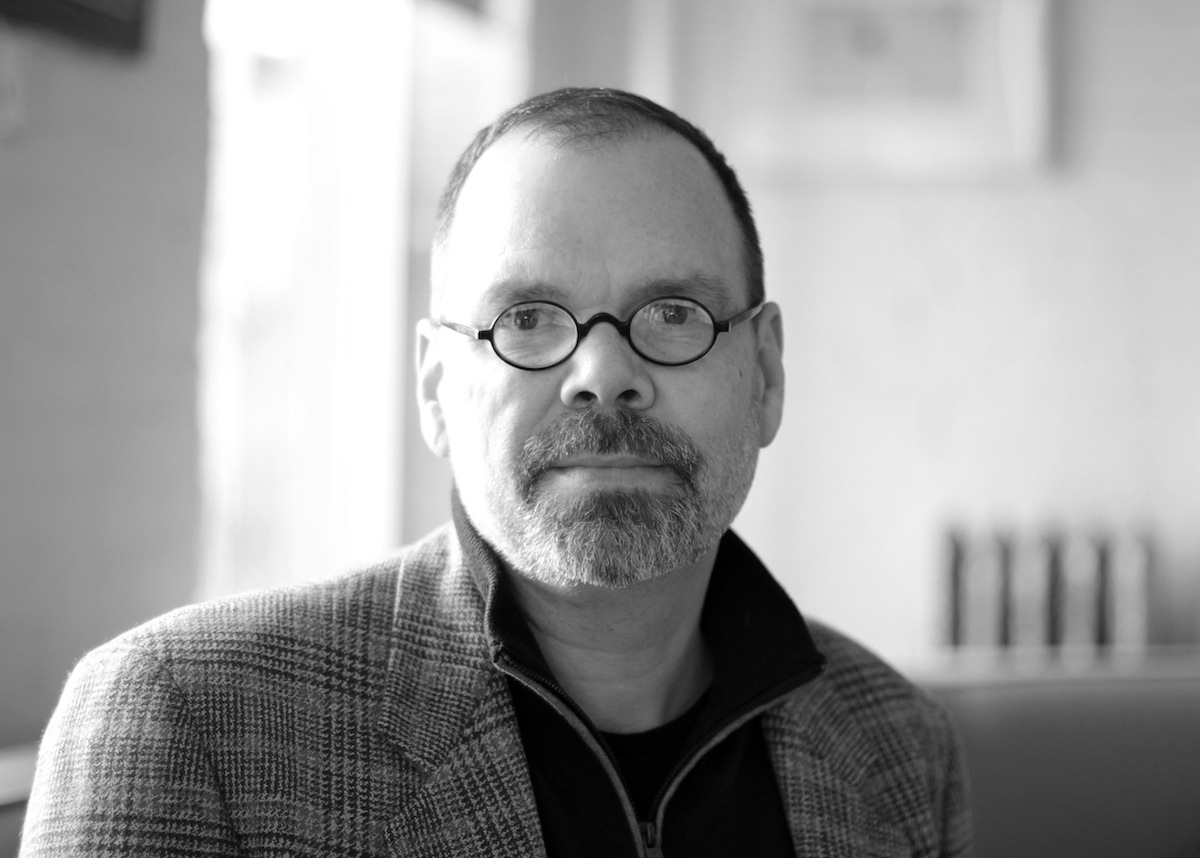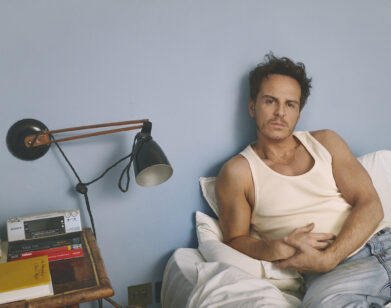David France, Witness to a Plague

ABOVE: DAVID FRANCE. IMAGE COURTESY OF IFC FILMS
David France’s first feature documentary, How To Survive A Plague, is a startling, searingly emotional record of the days before effective AIDS treatment and cultural recognition. The veteran journalist and author, who has contributed to The New York Times, Newsweek, Vanity Fair, and The New Yorker, has spent three decades chronicling the AIDS epidemic in print, and his first effort in film is nothing short of revelatory.
Founded in Greenwich Village in 1987, ACT UP (AIDS Coalition To Unleash Power), an activist group composed mainly of HIV-positive individuals, worked to raise awareness of the disease through theatrical and dramatic protests, forcing AIDS into the political conversation routinely ignored by public figures and dominating national conservatism. France tells the personal stories of members of ACT UP and its offshoot group, TAG (Treatment Action Group), and the change they affected, ultimately altering how federal healthcare policy and the pharmaceutical industry work, transforming an HIV diagnosis from an inescapable death sentence to a treatable condition.
The footage, sourced primarily from videotape shot by activists and filmmakers of the era, communicates ACT UP’s struggle in a deeply visceral, vérité style, enveloping the viewer in the immediacy and utter gravity of the cause at hand. How To Survive A Plague not only memorializes the work of these tenacious and brilliant individuals, and celebrates it, but also leaves a lasting impression of the possibilities and power of grassroots activism.
Interview spoke with France last week about his journey as documentarian, ACT UP’s lasting legacy, and the relevancy of reviving the AIDS conversation now.
COLLEEN KELSEY: You’ve spent the majority of your career writing about AIDS—how did you first begin covering the topic?
DAVID FRANCE: I was not a journalist when AIDS struck. I was a graduate student; I was studying philosophy. I was going to earn a meaningless Ph.D. in philosophy. [laughs] What do you do with something like that?
KELSEY: You become a professor, and keep the cycle of meaningless degrees going! [laughs]
FRANCE: I guess so! The furthest thing from my skill set. But, so, here comes an epidemic. The thing about an epidemic is that it calls on everyone to do something, and what I started to do was ask questions, and then send those answers out into the world. At the time, it was impossible to find information on what was happening. So, I started publishing stories in the alternative press. At first, it wasn’t journalism that I was doing, it was just promulgation of information. Over time, I got better as an interrogator and developed skills in investigative journalism. And so, ultimately, I think by ’84, I was working fulltime as a journalist and just trying to help, trying to do something.
KELSEY: And now you’ve transitioned to film—why did you decide to switch to a new medium?
FRANCE: Well, it was a decision made kind of along the way. A number of years ago, I thought, enough time has passed, it’s now possible to go back and look at that time, look at the plague years before the advent of effective treatments and see what parts of that story we hadn’t yet told. And the answer was that, really, all of the literature and films and storytelling about AIDS that we know and accept as kind of “the canon” was all produced then, in the middle of it, before it became clear that we were going to survive, or some people were going to survive, or survival was possible. So that’s the story I wanted to tell, how we as a community changed the epidemic. But my memory is spotty, as anyone’s would be from all that time ago, and I knew that there were cameras there. So I went back and started looking at the footage that some people captured. The footage was being generated by activists, people who were documenting the real power that was being corralled at the time, in the community, to affect this type of change. It helped me remember, certainly, it was like instant replay decades later, but I realized, also, that it would be possible, and even beneficial, to let that tape tell the story.
KELSEY: There seems to be a definite disconnect between generations when it comes to AIDS, especially in younger people who haven’t witnessed the effects firsthand. Coming of age in post-AIDS treatment, AIDS has really been boiled down to a textbook definition of tragedy, then treatment and prevention. Why do you think now is an apt time to reignite the discussion about AIDS activism and its legacy?
FRANCE: I do believe the timing is right. Now, as you’re pointing out, a new generation of people have absorbed only the news that something can be done, not the news of the dramatic and inspiring work that was undertaken in order for it to be done. I think this perception that the system just took care of things, that that’s how we got where we are, that there was a period of awfulness, and then we fixed it—so much more happened. It’s important to tell it, not just to honor the people who did all that work, but because the work that they did changed everything. Before AIDS and before AIDS activism, gay people had no role in civic life whatsoever. Certainly there were no gay characters on television, there was no discussion of gay marriage, there were no gay rights. I was fired from a job in 1984 for being gay. That just happened. And if it weren’t for AIDS and the work that these guys did, today’s culture wouldn’t be today’s culture. And then, just looking at the science. Everything about the way science and medicine is practiced today was a creation of these people. We watched them create it, in real time in this footage, in this film. You see how they’ve transformed the way drugs are identified and researched, designated and marketed. You see them creating those paradigms. But what you don’t see, which is also true, is that they changed the way doctors and patients talk to each other. They gave power and voice to patients for the first time, and now it’s permanent. Any disease today, if you have breast cancer, you have representatives from your community who are struggling with breast cancer, survivors of breast cancer, sitting at the table with researchers, determining strategy and approach as they’re determining which drugs to test and how to design the drug trials. All of that involves patients now. It had never existed before ACT UP knocked the doors down to the halls of science and created that space at the table.
KELSEY: The film is composed mainly of archival footage. How did you go about collecting it all?
FRANCE: I began at the New York Public Library. There is a brilliant collection of archival AIDS activism video that the library had the foresight to put together and preserve, because, you know, video is a fragile medium. It’s not intended to live decades. So they brought in a couple thousand hours of videotape from ACT UP itself and saved it. I combined that collection with independent video shot by other folks—filmmakers, community news outlets, public access cable shows, and other activists. I found them by looking at the footage at the library and identifying who else had cameras off in the distance. I tried to figure out who those people were and where they were today, if they had survived—many of them hadn’t survived—and then just seeing if they still had this stuff. And, it they still had this stuff, was it preservable, or was too much of it lost? Some of it was lost, but in every instance, I was allowed, for which I feel honored, to go into those collections and digitize them and then study them for other cameras in the background. It just became that process again. It was a forensic undertaking, but really an exciting one, to realize that this is the first grassroots movement that shot its own images like that.
KELSEY: It seems that video was critical to enabling this documentation to happen.
FRANCE: Video was brand-new. Actually, commercial video had been around for years, but the prosumer world, the idea that you could afford one of these cameras, and shoot things yourself, it made it suddenly affordable to do, and in ACT UP, we see the very first instance of them doing that. The stuff you see now, like Occupy Wall Street is shooting its own stuff, the Pro-Democracy movement in Russia is, we saw it in Tahrir Square, we see it in the Middle East, we see it all over the place, that people now have the ability to show what life is like behind the curtains of a mass, grassroots struggle. This was the first time.
KELSEY: There are a few individuals, like [bond trader turned ACT UP/TAG activist] Peter Staley, for example, whom the film tracks throughout its narrative. They represent the collective struggle against AIDS and emerge at the end of the film not only as survivors, but as heroes. Do you think of these individuals as revolutionaries?
FRANCE: By any objective measure, they are. In the world that they created, beginning as such outsiders, and as such disenfranchised people, that they were able to manage this revolutionary work is really stunning, and deserved recognition, even if they hadn’t been able to save all those lives. It makes you wonder why there’s no Nobel Prize for the work that they did. I certainly think that they would merit it.
KELSEY: I’m also curious—did you get a chance to see the ACT UP anniversary exhibition at the New Museum this spring?
FRANCE: No, I didn’t know about it! I wish someone would’ve told me. But I did see the retrospective of Gran Fury. Did you see that?
KELSEY: No, I didn’t get a chance to!
FRANCE: It was mounted at that gallery space on Washington Square. The organization [ACT UP] had affinity groups and committees. I followed the Treatment & Data Committee, which is one of them. Gran Fury was this arts activism movement that really helped put AIDS activism on the map. They came from a strong background, not just of art, but of advertising. They sold AIDS activism as though it were Madonna. They made it hot, they made it sexy, they made it clever. The Treatment & Data guys couldn’t have achieved what they achieved without the work that was being done by everybody else in the organization, without the cultural breakthrough and critique that Gran Fury was engaged in, without the Housing Committee pointing out that there was a second epidemic in the ’80s, which was homelessness, and that homelessness plus HIV meant even quicker death. All of these major thrusts came out of this small group, all working together to see what could be done to stop this pandemic. Unfortunately, if the federal government had intervened in ’81, ’82, ’83, we wouldn’t have a pandemic today. I had just moved to New York when the Times published its first story about the first cases. There were 41. Today, over 70 million people, and you think, at one point, there were just 41. If only something has been done there and then.
HOW TO SURVIVE A PLAGUE IS OUT IN LIMITED RELEASE NOW. DAVID FRANCE IS CURRENTLY WORKING ON A MAJOR HISTORY OF AIDS, DUE OUT FROM KNOPF IN 2013.






